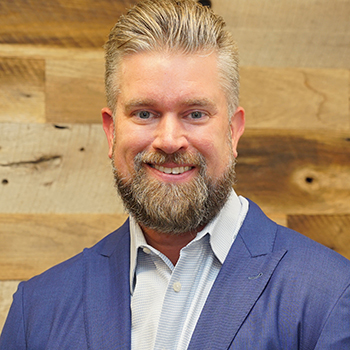As the pandemic begins to draw down, many physicians and advanced practice providers (APPs) are starting to look at new career opportunities. For those who are burned out or need a change of pace after a stressful year, locums can be an option for continuing to practice while also taking care of your personal needs. Luke Woodyard, president of Weatherby Healthcare, shares his predictions for higher locum tenens demand and why many organizations are rethinking their staffing models in Weatherby’s 2021 locum tenens market outlook.
A growing provider shortage

The demand for healthcare providers has never been higher, and as clinics reopen and elective procedures resume, facilities will need additional clinicians to provide care.
This demand is one of the biggest factors that will affect the locum tenens market in the coming years, says Woodyard. “There aren’t enough medical schools or educators, and we’ve seen flat growth as far as numbers of providers coming out of school. Combine that with an aging population that will increasingly need medical services, and there’s going to be an increased demand for providers with relatively the same supply.”
The distribution of physicians and APPs is also causing staffing shortages in rural areas. “There aren’t enough providers in the right places to meet the need. You don’t have as many physicians who want to go to rural health centers, which is challenging because those communities have high need,” he says.
The provider shortage amplifies other issues that affect staffing, such as burnout, physician retirement, and more insured patients, says Woodyard, creating the perfect storm for increased provider demand. This demand will likely translate into opportunities for locum tenens providers as organizations look for flexible ways to stretch their workforce.
Higher demand for some specialties
Some specialties are especially in short supply, and Woodyard expects to see increased demand for pulmonologists, cardiologists, oncologists, psychiatrists, and higher acuity specialties.
As elective and non-emergent procedures come back, he expects more locums jobs in hospitals, surgical centers, and outpatient settings as health systems try to meet the patient demand. While he expects some permanent staff providers will want to pick up additional work to make up for lost wages, it’s not sustainable in the long-term, he says.
“There’s enough pent-up demand that we’ll see an increased need in surgical specialties in the coming months; they’re going to need additional help, not only for the patient load, but for the well-being of their existing staff,” he says.
More patients seeking care
Woodyard expects patient numbers to increase in the coming year.
“Many people have stopped seeing their doctors in the past year over concerns due to the pandemic, and because of that, a lot of these ailments have gotten worse because they haven’t been getting regular treatment,” he says. “A lot of facilities don’t know what that demand is going to look like when it does come back, and that’s where locums can play an important part in helping these communities out.”
Woodyard also expects to see the number of patients seeking care rise due to changes made to the Affordable Care Act, which is likely to boost enrollment. “When the ACA began, demand shot up and stayed up for a while. As we see coverage being offered again to more individuals, I think we’ll see the same trend,” he says.
Changing healthcare staffing models
Following the big swings in patient demand during the pandemic, many organizations are rethinking the way they handle their clinician workforce.
“They’re learning that flexible staffing makes sense for a portion of their staffing model,” says Woodyard. “During the pandemic, a lot of staff providers were laid off or had a reduction in hours. The advantage of temporary staffing is being able to supplement and not have to lay people off or hire based on the influx of demand. That flexibility helps them meet the needs not only of the community and their patients, but also their revenue stream.”
He says that organizations are also considering using more locum tenens advanced practice providers — like PAs and NPs —to help provide coverage. “They’re highly-trained and skilled, and while it’s not a replacement for physicians, it’s a complement that can help make sure all the patients are getting the care they need. I think these professions are going to thrive over the next decade.”
Locums as a remedy to burnout
In the future, Woodyard sees locums as a way for many providers to practice medicine without getting burned out. “Locums is going to offer them the flexibility to increase their skill set, have different experiences, and go to different locations. It’s a great way to avoid burnout or take some time to recover.”
He adds that it’s also a great way to continue seeing patients while also controlling how much or how little they want to work. “We know there’s this pent-up demand, so locums is going to be a great option for either full-time or part-time work. And for those physicians who were furloughed and lost income last year, it’s a great way to earn some additional income on the side,” he says.
While Woodyard anticipates the overall demand for healthcare providers may still have some volatility over the next few months, he believes demand for locums providers will continue to rise. The locum tenens market outlook is positive for those who want to give locums a try.
Weatherby Healthcare is the locum tenens expert. Give us a call at 954.343.3050 to schedule your next assignment or view today’s locum tenens job opportunities.

